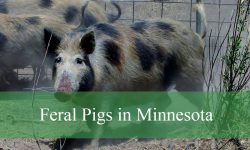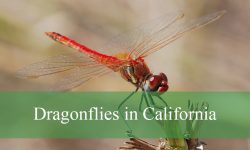Birdwatching across the Midwest offers many memorable moments, and Ohio stands out with its impressive variety of sparrows. These small birds, each with distinctive markings and songs, bring life to forests, fields, and wetlands throughout the state. Spotting sparrows in Ohio can turn any hike or stroll into a rewarding adventure.
The sparrows found in Ohio vary widely—from the familiar House Sparrow to rare visitors like the Seaside Sparrow—inhabiting a diverse range of environments such as marshes, grasslands, and suburban backyards. This diversity makes Ohio a favorite destination for both casual bird lovers and dedicated ornithologists seeking new species.
This guide highlights 22 types of sparrows in Ohio, complete with photos and identification tips to help you recognize each one. With this knowledge, your birdwatching journeys across the Buckeye State will be richer and more exciting as you discover the fascinating world of sparrows.
Different Types of Sparrows in Ohio
House Sparrow (Passer domesticus)
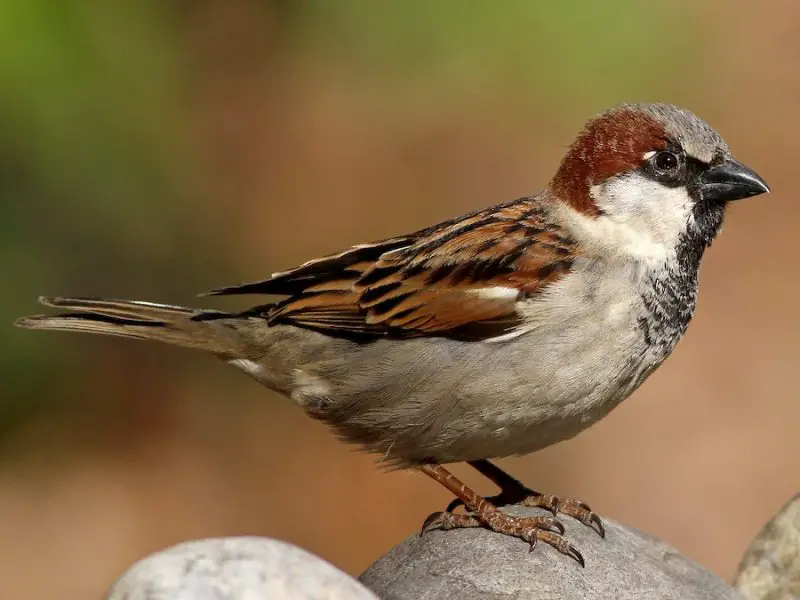
The House Sparrow is a small, chunky bird with a thick bill and a distinctive mix of gray, brown, and black feathers. Males typically have a gray crown, black bib, and chestnut markings on their wings, while females are more subdued in color with a plain brown and gray appearance. This species is easily recognized by its noisy chirping and gregarious behavior.
House Sparrows are highly adaptable and commonly found in urban and suburban environments throughout Ohio. They thrive near human settlements, nesting in buildings, eaves, and other structures. Their ability to live alongside people has allowed them to spread widely across the state.
Their diet mainly consists of seeds, grains, and scraps of human food, but they will also eat insects, especially during the breeding season to feed their young. A fun fact about House Sparrows is that they were introduced to North America from Europe in the 19th century and have since become one of the most widespread birds in Ohio.
Song Sparrow (Melospiza melodia)
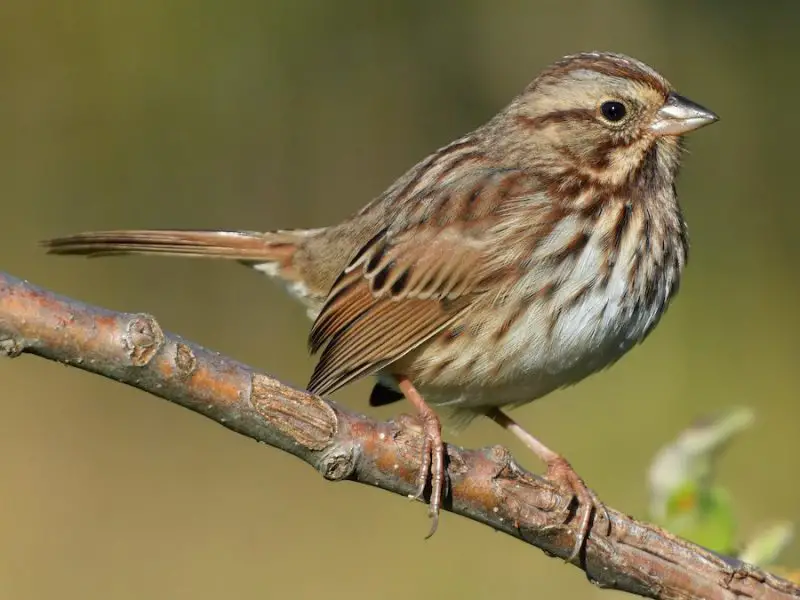
Song Sparrows are medium-sized sparrows with streaky brown plumage and a distinctive dark spot in the center of their breast. Their melodic and complex songs, which vary regionally, make them one of the most easily recognized sparrows by sound. They have a stout build with a rounded tail and streaked flanks.
In Ohio, Song Sparrows inhabit a variety of habitats including marshes, shrublands, forest edges, and residential areas. They prefer areas with dense vegetation where they can forage on the ground or low bushes. Their adaptability makes them one of the most common sparrows throughout the state.
Their diet mainly includes seeds, insects, and small invertebrates, which they forage from the ground or vegetation. A fun fact about Song Sparrows is that their rich and varied song repertoire plays an important role in attracting mates and defending territories.
Swamp Sparrow (Melospiza georgiana)
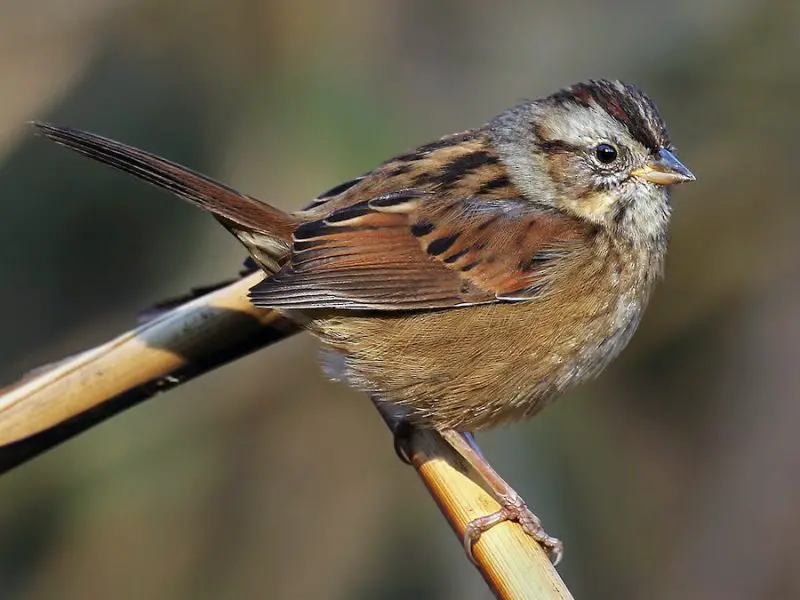
Swamp Sparrows are small, secretive birds with rich reddish-brown wings and a grayish face and underparts. Unlike many sparrows, they have a more uniform, muted plumage that helps them blend into their wetland habitats. Their song is a slow, musical trill that is quite distinctive.
This species is strongly associated with freshwater marshes, swamps, and wet meadows in Ohio. They prefer dense, wet vegetation near water where they can hide and forage. During migration, they may be found in a wider variety of shrubby or wet habitats but are less common in urban or dry areas.
Swamp Sparrows primarily feed on insects, spiders, and seeds found in the marsh vegetation. A fun fact is that Swamp Sparrows often walk rather than hop while foraging, which helps them navigate the wet, uneven terrain of their habitat.
White-throated Sparrow (Zonotrichia albicollis)

The White-throated Sparrow is known for its striking white throat patch and bright yellow lores (the area between the eye and bill). They have brown streaked backs and soft gray faces with a prominent white and black striped crown. Their clear, whistled song is a familiar sound in Ohio’s forests.
In Ohio, White-throated Sparrows are primarily seen during the fall and winter months when they migrate south from northern breeding grounds. They inhabit woodlands, forest edges, and brushy areas, often foraging on the forest floor or in low shrubs. During winter, they also visit feeders in suburban backyards.
Their diet consists mainly of seeds, berries, and insects. A fun fact is that White-throated Sparrows have two color morphs (tan-striped and white-striped), and individuals typically mate with the opposite morph, a rare example of balanced polymorphism in birds.
White-crowned Sparrow (Zonotrichia leucophrys)
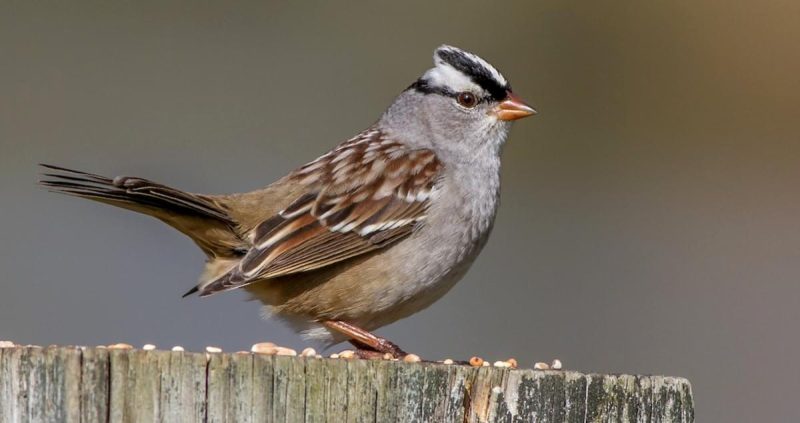
The White-crowned Sparrow is easily identified by its bold black and white stripes on the crown of its head. It has a pale gray face and breast with brown streaked wings and back. This medium-sized sparrow has a sharp, distinctive whistle as its song, which varies slightly by region.
White-crowned Sparrows are migratory visitors to Ohio, commonly passing through during spring and fall migration and occasionally staying for winter. They prefer open woodlands, brushy fields, and roadside edges during migration. Their preference for open habitats distinguishes them from many other sparrow species.
Their diet includes seeds, insects, and berries, which they forage on the ground or in low vegetation. An interesting fact about White-crowned Sparrows is that young birds learn their regional song dialect from neighboring males, demonstrating cultural transmission in birds.
Chipping Sparrow (Spizella passerina)
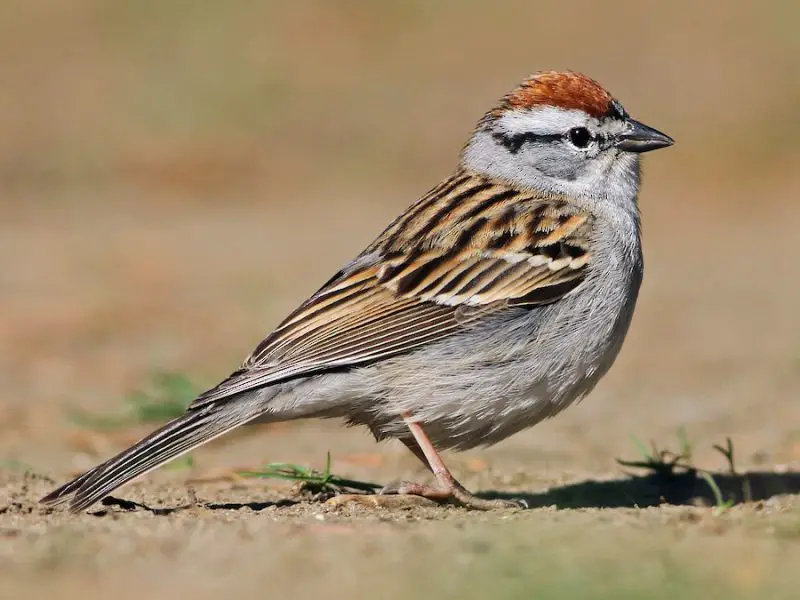
The Chipping Sparrow is a small, slender bird with a bright rusty cap, black eye line, and white eyebrow stripe. Its breast is pale with faint streaking, and the wings show neat rufous and gray patterns. The crisp, mechanical trill they sing is often heard in open woodlands and suburban areas during spring and summer.
In Ohio, Chipping Sparrows prefer open woodlands, parks, gardens, and residential areas with scattered trees. They are often one of the earliest migratory sparrows to arrive in spring and nest in shrubs or low trees. Their adaptability allows them to thrive in both natural and human-altered environments.
They feed mainly on seeds and insects, using their pointed bills to forage on the ground or among foliage. A fun fact about Chipping Sparrows is that they build neat cup-shaped nests, often decorated with lichens on the outside to camouflage them from predators.
Field Sparrow (Spizella pusilla)
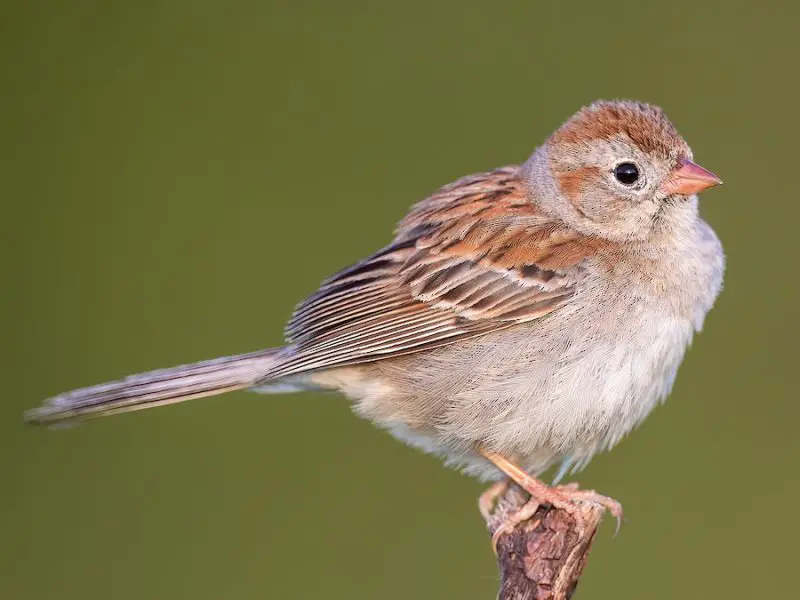
Field Sparrows are small and delicate, with soft grayish-brown upperparts, a pink bill, and a distinctive white eye ring. Their song is a clear, bell-like whistle that sounds like “see-you” repeated several times. They are often found in open fields, meadows, and shrubby areas in Ohio.
This species prefers grassy, brushy habitats with scattered shrubs and young trees. In Ohio, Field Sparrows breed in open farmland, abandoned fields, and roadside edges where vegetation provides good cover and nesting sites. They tend to avoid dense forests or heavily urbanized areas.
Their diet consists mainly of seeds, but they also eat insects during the breeding season. An interesting fact about Field Sparrows is their habit of flicking their tails downward while perched, a behavior thought to be a communication signal among birds.
Eastern Towhee (Pipilo erythrophthalmus)
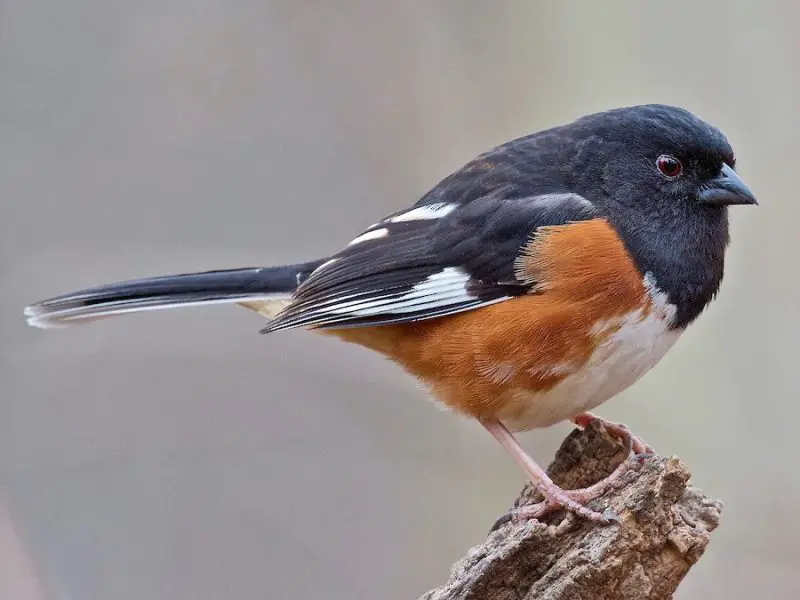
The Eastern Towhee is a striking sparrow with bold black and white plumage in males and warm brown where males have black in females. They have bright red eyes and a strong, conical bill. Their song is a clear, musical series of “drink-your-tea” notes, often heard in dense brushy habitats.
In Ohio, Eastern Towhees are commonly found in shrubby areas, forest edges, and overgrown fields. They prefer habitats with dense undergrowth where they can forage on the ground by scratching leaf litter with both feet in a characteristic “double-scratch” motion.
They eat a mix of seeds, berries, and insects, adapting their diet seasonally. A fun fact is that Eastern Towhees are known to make loud “chewink” calls when alarmed, which are commonly heard in their preferred thick habitats.
Savannah Sparrow (Passerculus sandwichensis)
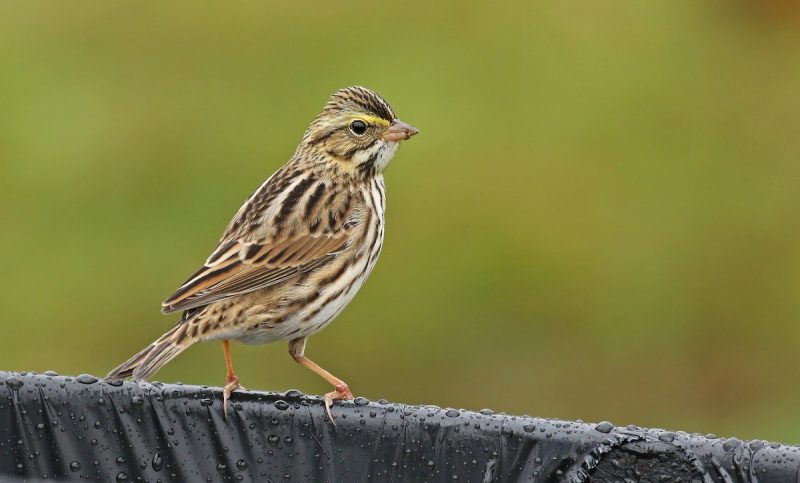
Savannah Sparrows are small with streaked brown upperparts and pale underparts marked with faint streaking. They have a distinctive yellow patch just above the eye called the supercilium. Their song is a rapid, insect-like trill that rises and falls in pitch.
This species favors open habitats such as grasslands, fields, and marsh edges across Ohio. They breed in grassy meadows and prairies and can also be found in coastal and wetland areas during migration. Their presence reflects the availability of open spaces with low vegetation.
Savannah Sparrows primarily feed on seeds and insects found on the ground or in grasses. A fun fact is that during migration, they often travel in flocks, mixing with other sparrow species as they move between breeding and wintering grounds.
American Tree Sparrow (Spizelloides arborea)
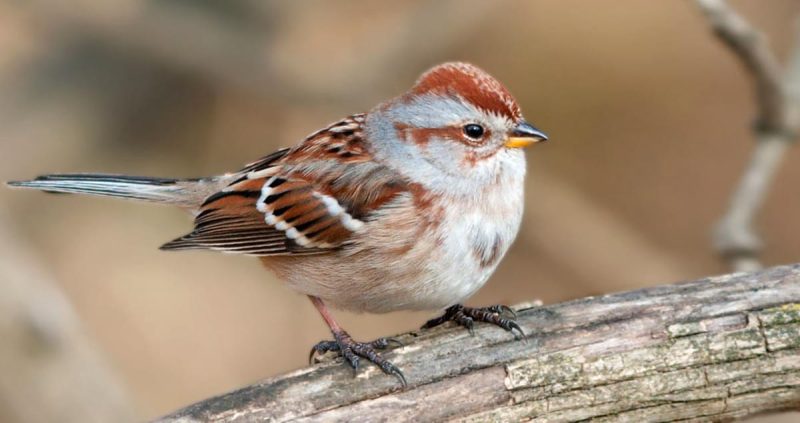
The American Tree Sparrow is a small sparrow with a rusty cap, gray face, and a distinct dark spot in the center of its pale breast. It has a finely streaked brown back and a bi-colored bill that is dark on top and yellow underneath. Their soft, clear song is less often heard as they are winter visitors in Ohio.
In Ohio, American Tree Sparrows are mostly winter visitors, arriving from northern breeding grounds. They prefer open fields, brushy areas, and farmland with scattered trees during the colder months. They are often seen foraging on the ground in flocks.
Their diet consists mainly of seeds but shifts to include insects when available. A fun fact about American Tree Sparrows is that they are one of the few sparrows that breed in the Arctic tundra but spend winters far south, including Ohio’s open fields and farmlands.
Fox Sparrow (Passerella iliaca)
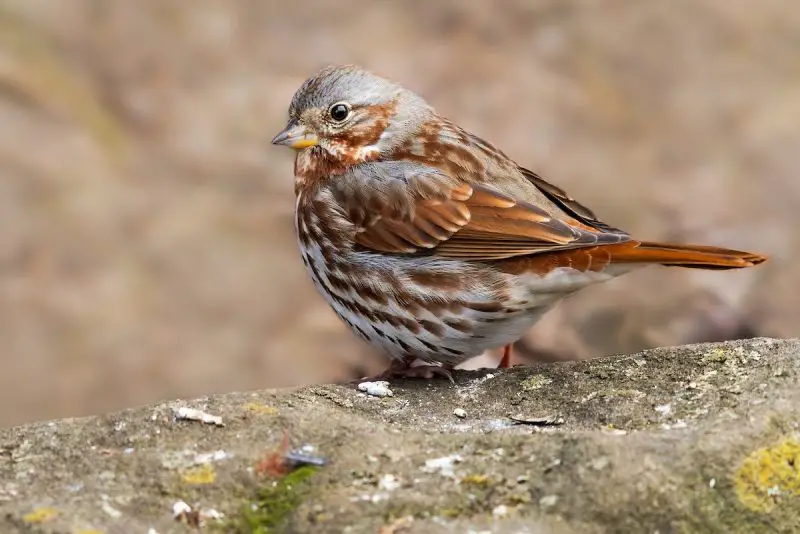
The Fox Sparrow is a large, chunky sparrow known for its rusty-red coloration and heavily streaked underparts. It has a thick bill and a distinctive reddish-brown tail and back, which make it stand out among sparrows. Their song is a rich, melodious warble, often heard in dense brushy habitats.
In Ohio, Fox Sparrows are primarily winter visitors, typically found in dense thickets, woodland edges, and shrubby areas. They prefer habitats with thick undergrowth where they can forage on the ground, staying well hidden. Their presence in Ohio usually peaks during the colder months as they migrate from northern breeding areas.
Their diet mainly includes seeds and insects, which they forage for on the forest floor by flipping leaf litter with their bills. A fun fact about Fox Sparrows is their strong, purposeful hopping and scratching behavior when searching for food, making them quite active foragers.
Vesper Sparrow (Pooecetes gramineus)

The Vesper Sparrow is a medium-sized sparrow with pale brown streaked upperparts and a clean white belly. It has a distinctive white eye ring and white outer tail feathers that are noticeable in flight. Its song is a melodic series of short notes followed by a long trill, often delivered from a perch.
In Ohio, Vesper Sparrows are mostly found in open grasslands, fields, and prairies. They prefer areas with sparse vegetation and bare ground patches for nesting and foraging. Although less common than some sparrows, they are known to breed in suitable habitats in the state.
Their diet consists primarily of seeds and insects, with insects becoming more important during the breeding season. An interesting fact about Vesper Sparrows is that they often sing during evening hours, which is reflected in their name—“vesper” meaning evening.
Lincoln’s Sparrow (Melospiza lincolnii)
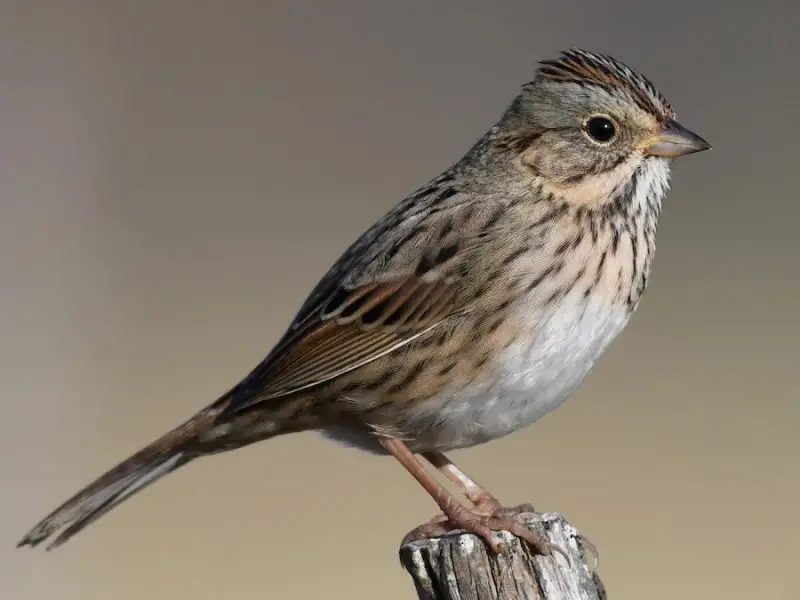
Lincoln’s Sparrow is a small, shy sparrow with finely streaked brown upperparts and a buffy, spotted breast. It has a grayish face with a pale eye ring and a delicate, high-pitched song that is soft and musical. This species is often hard to spot because of its secretive behavior.
In Ohio, Lincoln’s Sparrows are primarily spring and fall migrants, found in moist thickets, shrubby wetlands, and brushy areas. They prefer dense cover where they can forage quietly on the ground or low vegetation. They are uncommon but regular migrants through the state.
Their diet consists mainly of insects and seeds, which they pick from leaf litter or low shrubs. A fun fact is that Lincoln’s Sparrow’s subtle and sweet song often goes unnoticed because they sing from low, hidden perches, making them more of a “songster in the shadows.”
Brewer’s Sparrow (Spizella breweri)

Brewer’s Sparrow is a small, plain sparrow with grayish-brown upperparts and faint streaking on its breast. It has a slender build with a small, conical bill and a subtle eye ring. Its song is a series of high-pitched, buzzy, and warbling notes.
This species is rare in Ohio and usually considered a vagrant or accidental visitor, typically seen during migration. Brewer’s Sparrows prefer dry sagebrush habitats and open shrublands, which are uncommon in Ohio, explaining their rarity in the state.
They mainly feed on seeds and insects, foraging on the ground or in low shrubs. A fun fact about Brewer’s Sparrow is that it is more common in the western U.S. and is rarely observed this far east, making any Ohio sightings notable for bird watchers.
Henslow’s Sparrow (Centronyx henslowii)
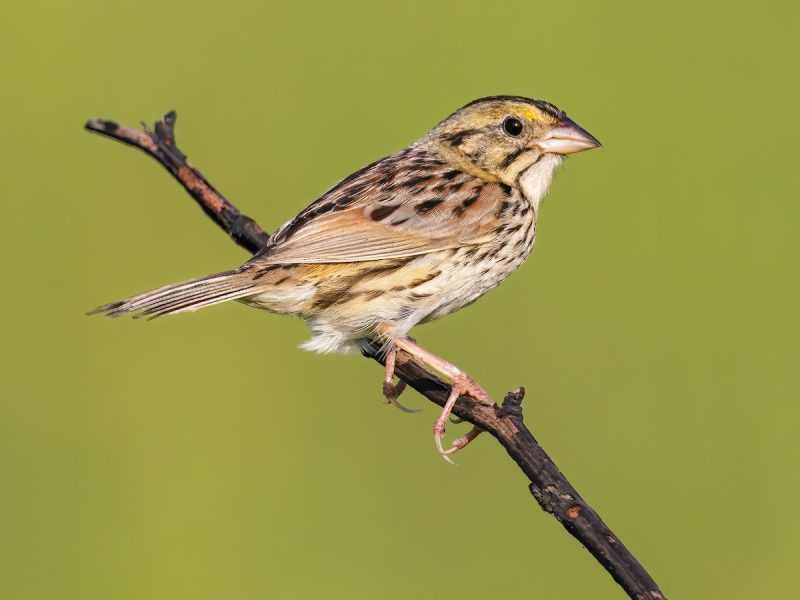
Henslow’s Sparrow is a small, secretive sparrow with olive-green and brown streaked upperparts and a yellowish face with a dark crown. It has a short tail and a quiet, insect-like buzzing song. This species is often difficult to spot because it stays low in dense grasslands.
In Ohio, Henslow’s Sparrows inhabit moist, tallgrass prairies and open meadows with thick vegetation. They require large patches of native grassland for breeding and are considered a species of conservation concern due to habitat loss. Their presence indicates healthy grassland ecosystems.
Their diet includes seeds and insects, which they forage for close to the ground. A fun fact is that Henslow’s Sparrows perform a unique aerial display during courtship, fluttering above the grass to attract mates.
Nelson’s Sparrow (Ammospiza nelsoni)
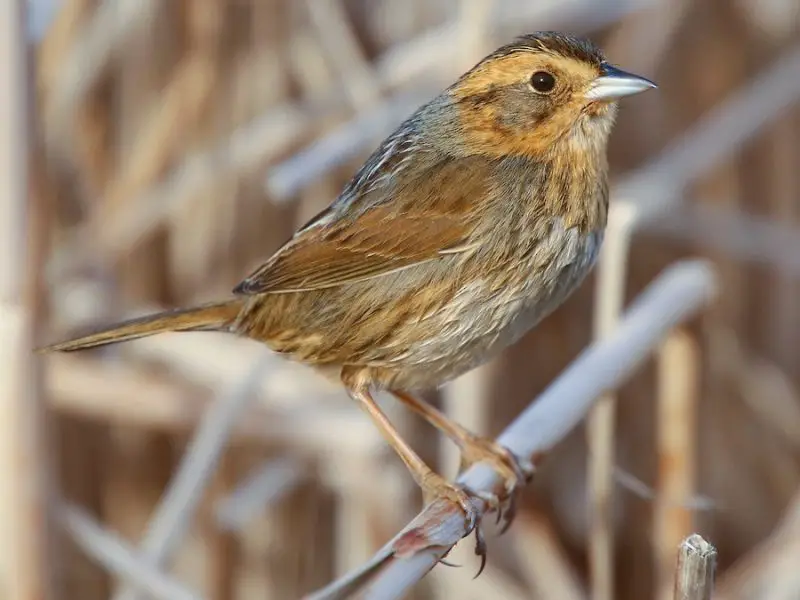
Nelson’s Sparrow is a small, secretive bird with a warm buffy-orange face and breast, streaked brown back, and a short tail. Its call is a sharp, buzzy trill often heard in dense marshes. It is difficult to see due to its shy behavior and preference for thick vegetation.
In Ohio, Nelson’s Sparrows are mostly seen during migration, frequenting coastal marshes, wet meadows, and freshwater wetlands. They prefer habitats with tall grasses and reeds where they can hide and forage on the ground. Their presence in Ohio is seasonal, mainly in spring and fall.
They feed mainly on insects and seeds found in marshy environments. A fun fact about Nelson’s Sparrows is their unique ability to thrive in challenging wetland habitats, using their specialized legs and bills to forage among dense reeds and grasses.
Clay-colored Sparrow (Spizella pallida)
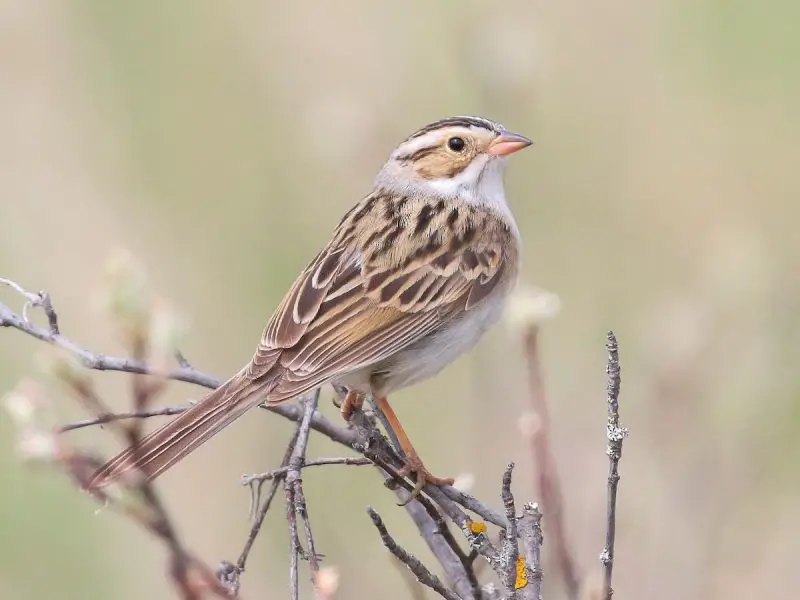
The Clay-colored Sparrow is a small sparrow with pale gray-brown upperparts, a buffy face with a light eye stripe, and a plain, unstreaked breast. It has a sweet, musical song often described as a series of burry, buzzing notes.
In Ohio, Clay-colored Sparrows are uncommon but regular migrants, seen mostly in shrubby fields, open woodlands, and brushy edges during spring and fall. They prefer open habitats with scattered shrubs for nesting and foraging.
Their diet consists of seeds and insects, foraged from the ground or low vegetation. An interesting fact is that Clay-colored Sparrows often nest low in shrubs and sometimes use old nests of other birds, showing flexible nesting behavior.
Dark-eyed Junco (Junco hyemalis)

The Dark-eyed Junco is a medium-sized sparrow with a slate-gray body, white belly, and pinkish bill. Its song is a clear, musical trill, and it is often seen hopping on the ground in flocks during winter. There are several regional color variants across North America.
In Ohio, Dark-eyed Juncos are common winter visitors, frequenting woodlands, parks, and suburban areas. They prefer habitats with open ground for foraging and nearby trees or shrubs for cover. During colder months, they form large flocks that feed on seeds and insects.
They primarily eat seeds in winter and add insects during the breeding season. A fun fact about Dark-eyed Juncos is that they are sometimes called “snowbirds” because their arrival in Ohio signals the start of winter.
Le Conte’s Sparrow (Ammospiza leconteii)
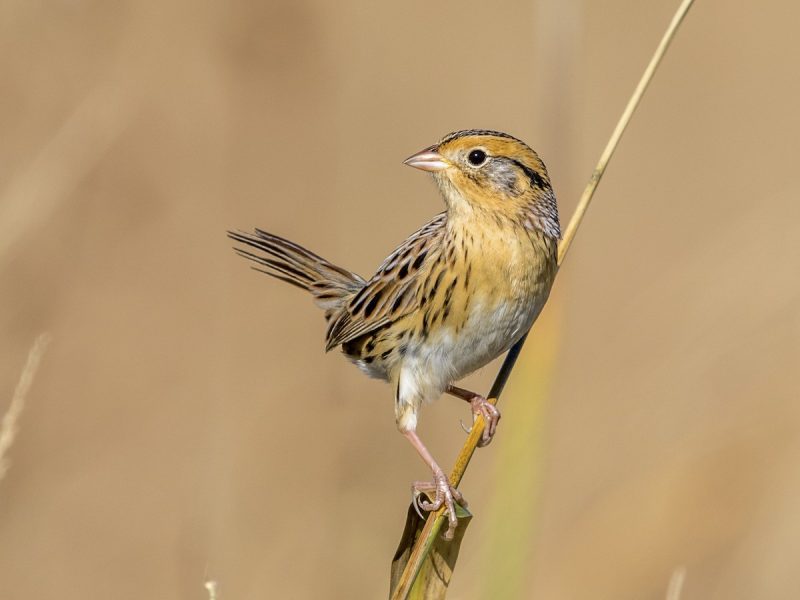
Le Conte’s Sparrow is a small, secretive sparrow with finely streaked buff and brown upperparts and a pale, unstreaked belly. Its face is marked with a pale orange cheek patch and a subtle eye stripe. Its song is a soft, insect-like trill.
This species is rare in Ohio and mainly seen during migration in moist grasslands and sedge meadows. It prefers dense, low vegetation near wetlands, which provides excellent cover. Its elusive behavior makes it hard to spot even when present.
Le Conte’s Sparrows feed on seeds and insects found among grasses. A fun fact is that despite their rarity, their specialized habitat needs make them important indicators of healthy wet meadow ecosystems.
Harris’s Sparrow (Zonotrichia querula)
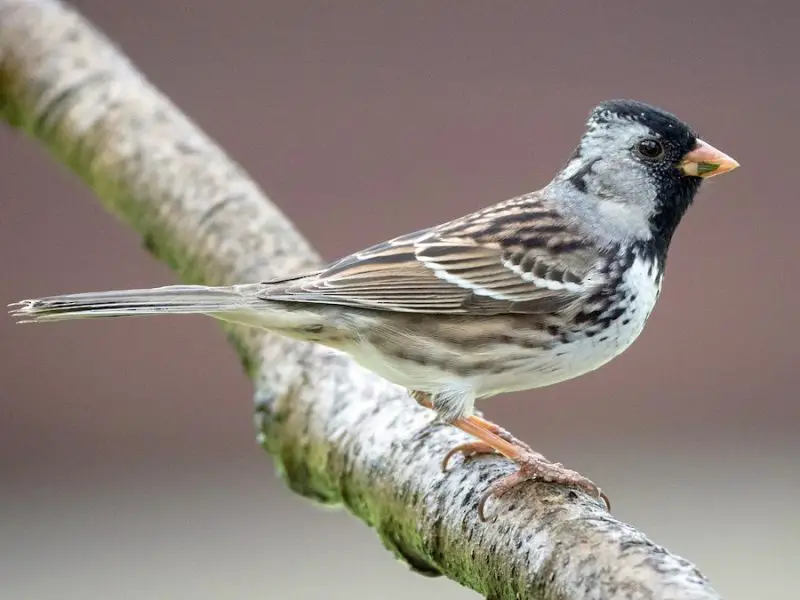
Harris’s Sparrow is the largest sparrow found in North America, with striking black and white facial markings and a pink bill. It has a black crown, throat, and bib, contrasting sharply with its gray cheeks and chest. Their song is a clear, musical series of whistles.
In Ohio, Harris’s Sparrows are rare winter visitors, typically seen in open woodlands, fields, and edges with scattered trees. Their presence is irregular and often depends on harsh winter conditions further north pushing them south.
They primarily eat seeds and berries but also consume insects. A fun fact about Harris’s Sparrow is their unique range, breeding in northern Canada but occasionally wandering far south during severe winters, surprising birdwatchers.
Golden-crowned Sparrow (Zonotrichia atricapilla)
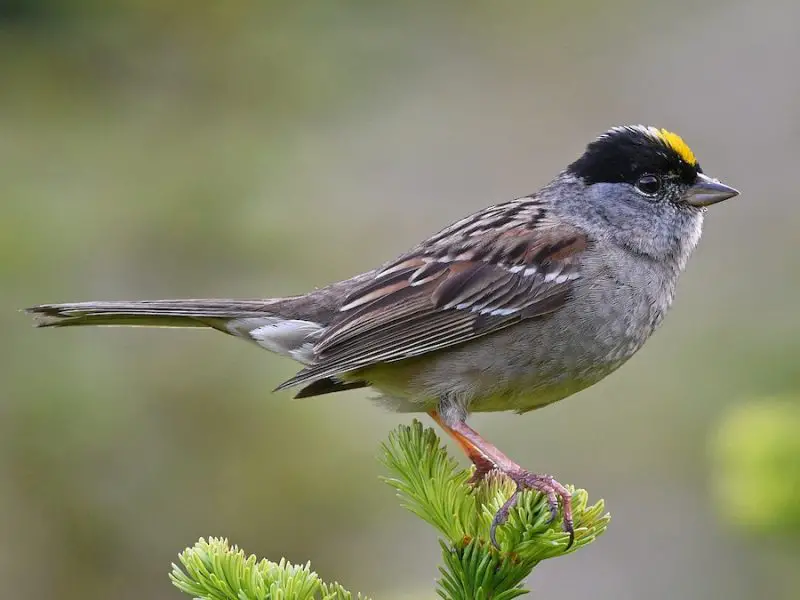
The Golden-crowned Sparrow has a distinctive bright yellow patch on the crown bordered by black stripes on its gray head and brownish body. It has a soft, musical trill for a song and a stout bill suited for seed-eating.
In Ohio, Golden-crowned Sparrows are very rare visitors, mainly during migration or in winter. They typically inhabit brushy areas, thickets, and forest edges in their native western ranges but occasionally stray eastward.
Their diet consists of seeds and insects, foraging on the ground and in low vegetation. A fun fact is that their striking crown markings make them one of the easiest sparrows to identify visually, even when seen briefly.
Seaside Sparrow (Ammospiza maritima)
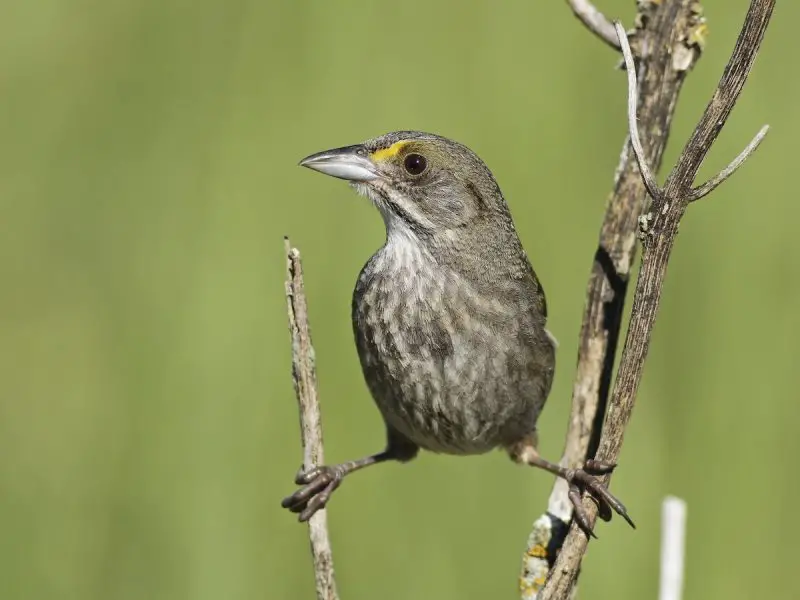
Seaside Sparrows are medium-sized sparrows with olive-brown upperparts and bright orange patches on the sides of their necks. They have streaked breasts and a short, conical bill adapted for their coastal marsh habitat. Their song is a buzzy trill often heard near salt marshes.
In Ohio, Seaside Sparrows are very rare and generally limited to coastal or brackish marsh areas during migration. Their preferred habitat includes salt marshes and tidal wetlands, which are scarce in Ohio, making sightings unusual.
They feed mainly on insects, crustaceans, and seeds found in marsh vegetation. A fun fact about Seaside Sparrows is their remarkable adaptation to saline environments, where they thrive despite the challenges of salty marshes.

